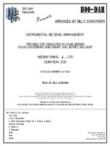BLUES TO BE THERE (FROM THE NEWPORT JAZZ FESTIVAL SUITE)
Performed by The Duke Ellington Orchestra
Arranged by Billy Strayhorn, Transcribed by Mark Lopeman

Cat #: JLC-5000
$50.00This item usually ships within 1 business day.
Questions?
Please call +1-518-587-1102 or email us.
Edition: Jazz Big Band Arrangement
Description: Blues - Difficult
Publisher: Jazz at Lincoln Center
Ellington loved the blues. He found a way to use the blues feeling and/or structure in virtually everything he wrote. Naturally, this had a profound effect on his disciple, Billy Strayhorn, who uses many of the devices Ellington created in the late 1930s to help create this movement of The Newport Jazz Festival Suite. Although it was the wild performance of Diminuendo and Crescendo in Blue that caused an uproar that evening and placed Ellington on the cover of TIME magazine, this evocative and creative blues also deserves to be called a classic.
Specifically, the bitonal trombone chords that leave such a distinct impression in this piece are logical extensions of Ellington’s 1938 Subtle Lament and 1940 Across the Track Blues. That leads us to one of the quintessential challenges facing bands that interpret compositions such as this one. This is not 'just another blues,' but one in a chain of compositions that relate to one another, and demand an interpretation that underlines the deep history of Ellington’s music. Soloing is not an occasion for simple improvisations on chords. Each solo must relate to the composition as a whole—what comes before, what comes after, which specific harmonies that Ellington/Strayhorn used. The more serious listening the band does with the piece and with the pieces that came before it, the more Ellington’s concepts will be realized and the better the performance will be. Also, keep in mind that the various segments should have a feeling of unity as they segue into one another.
Woodwind 1: Alto Sax
Woodwind 2: Alto Sax/Clarinet
Woodwind 3: Tenor Sax
Woodwind 4: Tenor Sax
Woodwind 5: Bari Sax
3 Trumpets
3 Trombones
Piano
Bass
Drums
Trombone 1: Cb5











